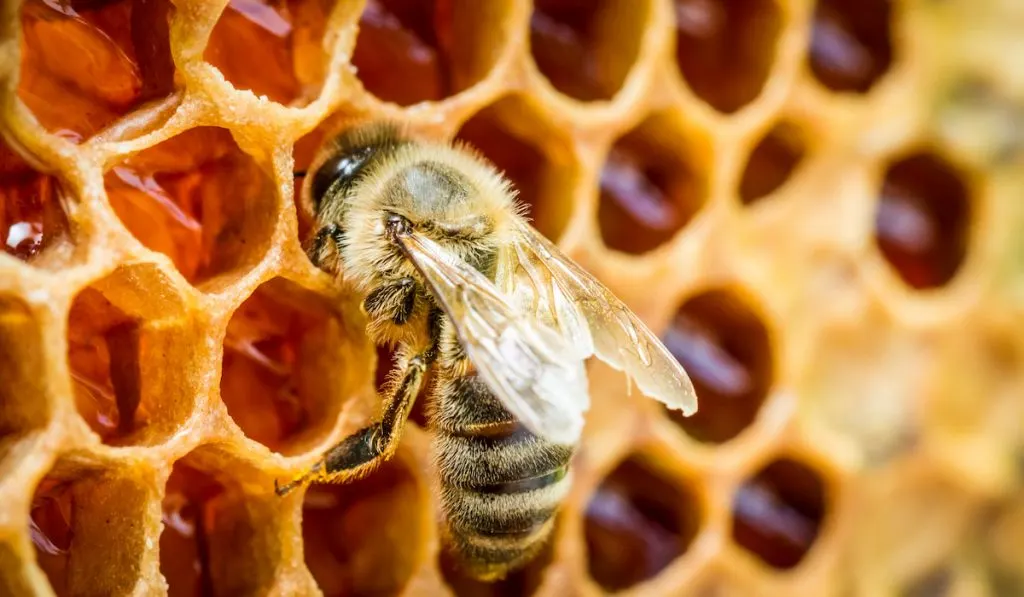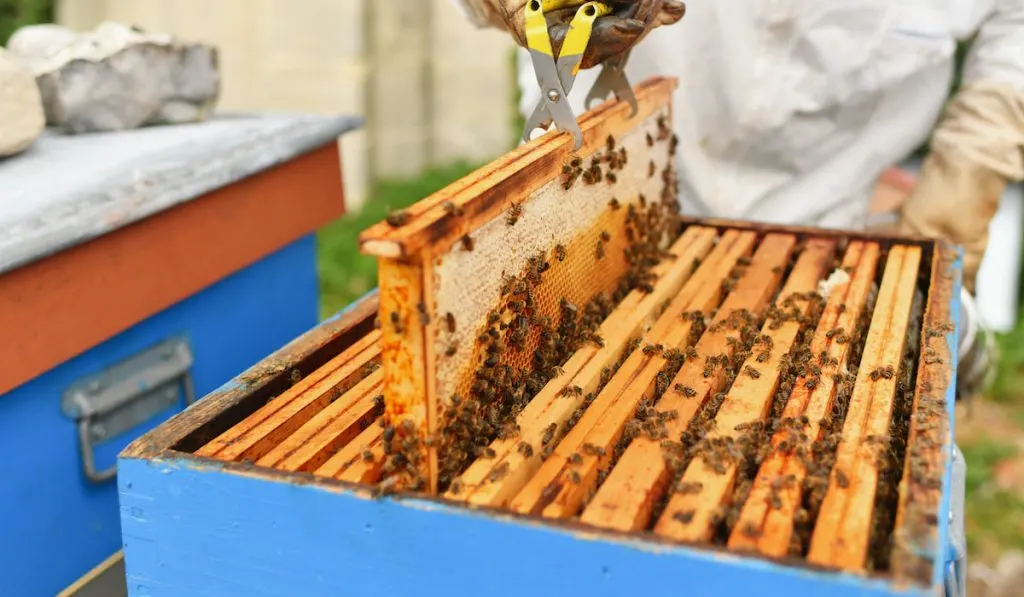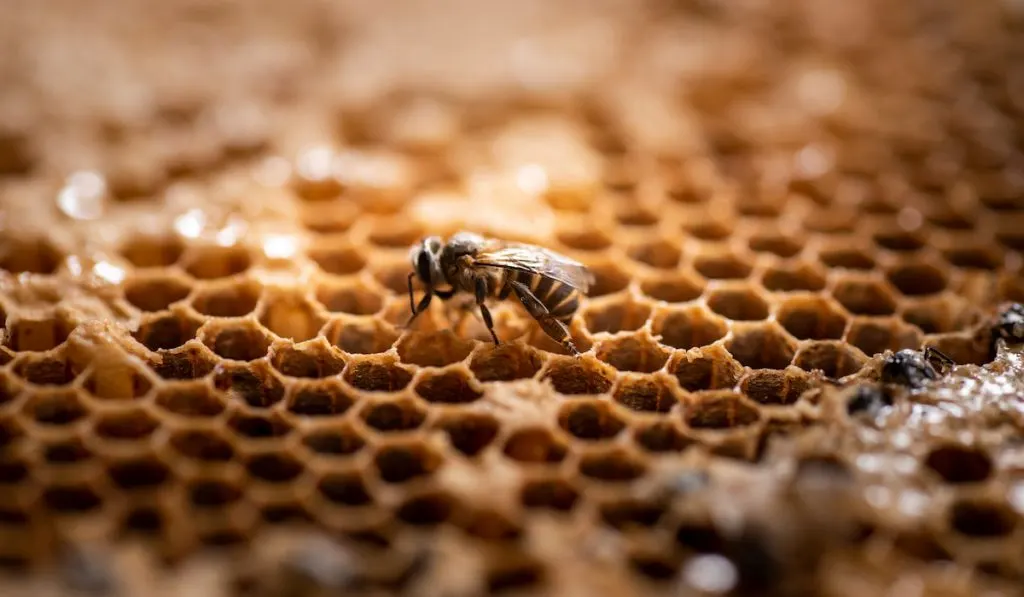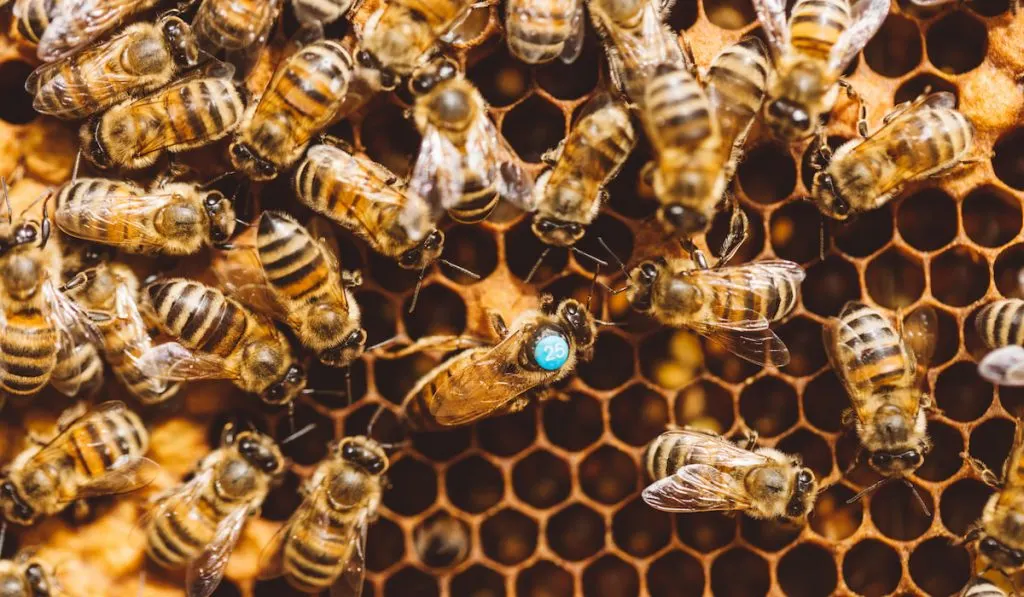*This post may have affiliate links, which means I may receive commissions if you choose to purchase through links I provide (at no extra cost to you). As an Amazon Associate I earn from qualifying purchases. Please read my disclaimer for additional details..
When you think of queens, your mind probably wanders to the usual monarchial system where there is a sole ruler.
But would it interest you to know that things may not be that way in the bee world?
For one, queen bees are not rulers, and they may also not be solitary.
Can a beehive have two queens?
Beehives can have two queens.
While the typical situation is for a hive to have one queen, at times there may be two. It could happen when the virgin queen and the old queen coexist.

It could also happen when two virgin queens, rather than fight to the death, tolerate each other. In some cases, the beekeeper might create a two-queen hive.
In the rest of this article, we explore the two-queen system in bees and answer related questions.
Table of Contents
Can a Beehive Have More Than One Queen?
The usual order of things in a beehive is for the virgin queen that hatched first to kill other virgin queen cells before they hatch.
But sometimes, two virgin cells hatch at the same time. When this happens, both instinctively will fight to the death.
While this appears to be the more common occurrence, sometimes the two young queens will not fight each other.
In fact, they might even tolerate each other for a while. When this happens, the beehive will have two queens.

Usually, when a queen bee gets old, she either dies or leaves the hive.
Alternatively, she could duel with the new queen bee and be killed, or the worker bees may kill her.
But in some cases, the old queen bee is allowed to live. She does not leave the hive, the worker bees do not kill her, and the new queen does not kill her.
Rather, the succeeding queen tolerates her for some time. In such a case, the hive will have two queens.
In another situation, the two queens involved in a duel might both be injured. When this happens, they would be unable to fight and would have to coexist.
Besides the situations described above, some beekeepers create two-queen hives themselves.
The goal of doing such is to create a larger population that produces more honey. In this case, the two queens are prevented from accessing each other for obvious reasons.
Queens can only sense one another when there is direct contact between them.
Why Is There Only One Queen per Hive?
Due to its name, one might conclude that the queen bee is the ruler of a hive. But this is not accurate.
The main role of the queen bee in a beehive is to lay eggs.
Now, like every other animal, queen bees express their reproductive rights.
The fight between two queen bees is, in a way, a show of their sexual fitness.
Beehives need strong, fit, and viable queens. A duel between two queens may be a way for them to show that they meet the requirements.
An olfactory stimulus from the abdominal tergites triggers the fighting behavior in queens. Once primed, the queens will fight when they come in direct contact with each other.
In the fight, they will try to sting each other. Typically, the queen that successfully stings the other wins while the other dies.
In summary, beehives usually have one queen because the other queens and queen cells are killed by the strongest queen.

Does Every Hive Have a Queen Bee?
The queen bee is important to every hive. Without a queen bee, a beehive will most certainly perish.
The hive may not last more than a few months without a queen. So, yes, every hive needs a queen bee.
But does every hive have a queen bee? No. Sometimes, a hive’s queen may die, get killed, or leave suddenly.
During the period before the dead queen is replaced, the hive will be queenless.
In such a situation as described above, the worker bees will have to foster an emergency queen.
The worker bees would try to convert young bee larvae to queens by feeding them with royal jelly.
As the larvae grow to the pupae, they will be covered in beeswax by the worker bees.
Then after around 15 days, a virgin queen will chew her way out of the beeswax.
Some ways to identify a hive without a queen include:
- There is a drop in the population.
- You find no eggs or broods around the hive.
- The members of the hive may become nervous or irritated. Their change in temperament may be evident in the sound they make.
- You may notice the presence of laying workers if the hive stays without a queen for too long.
- There could be an increase in the production of pollen and honey. Without the queen, some worker bees will be less occupied. These worker bees join in the creation of food and knock up the volume of production.

How Does a Bee Become Queen?
All eggs laid by the queen bee are equal.
But some may proceed to become queens while others will not. This phenomenon occurs thanks to worker bees.
When it is time to replace the existing queen bee, worker bees feed some of the larvae with royal jelly.
Royal jelly, being richer than the usual bee diet, is vital for larvae to develop into queen bees.
On feeding the larvae with royal jelly, they will develop into pupae. After morphing into pupae, the worker bees cover them in beeswax.
The pupae form remains in the beeswax for about 15 days. Then when mature, it chews its way through the beeswax.
On emerging from the beeswax, the virgin queen will set out to destroy the other queen pupae. This way, she becomes the sole queen bee.
Sometimes, two queen pupae hatch at the same time. When this happens, both of them will fight to the death, leaving the winner of the duel as queen.
Final Thoughts
A beehive can have two queens. While people typically expect that hives have one queen, it appears that two-queen beehives might be more common than expected.
Such two-queen systems can be created artificially by beekeepers, or they could come about naturally.
Resources
- https://www.honeybeesuite.com/two-queens-in-one-hive/
- http://honeybee.drawwing.org/book/queen-fighting
- https://www.beverlybees.com/a-hive-with-two-queens/
- https://beekeepinglikeagirl.com/6-things-you-didnt-know-about-queen-bees/
- http://www.fao.org/
- https://beekeepinglikeagirl.com/signs-your-colony-is-queenless/
- https://backyardbeekeeping.iamcountryside.com/ask-the-expert/how-long-will-a-colony-survive-without-a-queen/
- https://sciencing.com/bee-become-queen-bee-5200755.html
